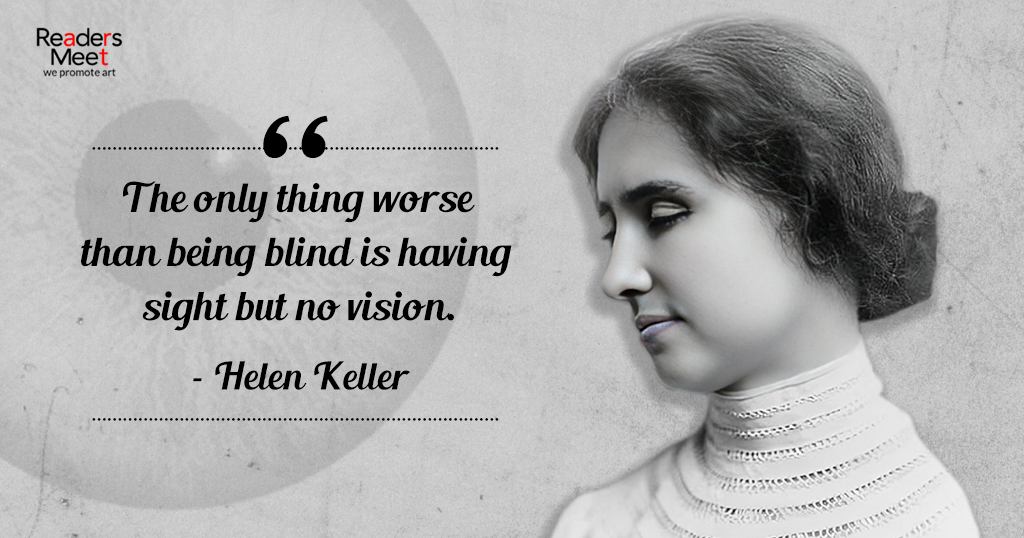A life beyond disability: How Helen Keller defied physical disabilities to inspire the world. Helen Keller, who, against all odds, overcame deafness and blindness to become a renowned author, advocate, and symbol of perseverance.
She unfortunately developed a febrile illness at the age of 19 months, which left her deaf and blind. Even though Helen Keller couldn’t hear or see, she grew up to be a compassionate person who helped people who were blind, fought for women’s right to vote, and even started an organization to protect people’s freedoms. This was back in the 1990s.
The Milestones of Her Story:
The year 1887
In 1887, Helen Keller’s world was about to change. At the age of seven, she met Anne Sullivan, a young teacher with a passion for helping the deafblind. Sullivan arrived at the Keller home armed with a revolutionary method: finger-spelling words into Helen’s palm. This seemingly simple act became the key that unlocked Helen’s potential. For the first time, Helen grasped the connection between objects and their names, a breakthrough that ignited her thirst for knowledge. With Sullivan’s unwavering dedication, Helen embarked on a remarkable educational journey, forever changing the course of her life.
The year 1898
Helen Keller’s determination to learn burned brightly from a young age. Despite the immense challenges of being deaf and blind, she set her sights on college. In 1898, at the age of 20, Helen enrolled at the Cambridge School for Young Ladies to prepare for the prestigious Radcliffe College.
The year 1900
Down the road, in two years, she achieved what many thought impossible. Helen entered Radcliffe in 1990. Helen Keller’s decision to enroll at Radcliffe College in 1900, at the age of 22, was a landmark achievement that defied expectations and shattered barriers. A young woman, deaf and blind right from infancy, dares to pursue higher education in a world that is not designed for her unique needs. This wasn’t just a personal victory; it was a bold statement about the potential of people with disabilities.
The year 1904
Enrolling at Radcliffe College was the first step towards being the philanthropic person that she was. 1904 marked a historic triumph for Helen Keller. At 24, she defied the impossible, graduating cum laude from Radcliffe. Blind and deaf since infancy, she became the first deafblind person to earn a Bachelor of Arts degree. This wasn’t just a personal victory; it shattered barriers, proving education’s reach and igniting hope for countless others with disabilities.
The year 1913
From 1913 on, Helen Keller began a prolific public speaking career. Using her powerful voice, she became a tireless advocate for the rights of people with disabilities. She traveled all over the United States, passionately delivering lectures on behalf of the American Foundation for the Blind (established in 1915), an organization dedicated to empowering the visually impaired community. Her captivating talks not only raised awareness but also inspired action towards creating a more inclusive society.
The year 1920
In 1920, Helen Keller broadened her commitment to equality and disability rights by co-founding the American Civil Liberties Union (ACLU). This act showcased her unwavering commitment to social justice and human rights for everyone. The ACLU fights for individual liberties and equal treatment under the law, a cause that resonated deeply with Helen’s belief in a just and equitable society. Her involvement wasn’t just symbolic; it demonstrated her desire to create a world where all voices, regardless of ability, could be heard and protected.
The decade of 1930s
Throughout the decade of the 1930s, Helen Keller’s literary voice remained vibrant. She carried on to be a prolific writer, penning several books and essays that tackled a diverse range of topics. These works weren’t limited to disability rights, showcasing her broad intellectual curiosity. Whether exploring philosophical questions, delving into social issues, or recounting personal experiences, Helen’s writing in the 1930s further solidified her reputation as a thoughtful and insightful author.
The year 1946
From 1946 on, Helen started traveling around the world for the American Foundation for the Blind (AFB). Within the span of 11 years, she visited 35 countries! She used these trips to talk about how important education is for everyone, especially people with disabilities, and to convince people to be more accepting of learning and education despite their disabilities.
The year 1964
On September 14, 1964, Helen Keller’s most illustrated and remarkable life received the tribute that it deserved. Then President Lyndon B. Johnson awarded her the prestigious ‘Presidential Medal of Freedom’, the highest civilian honor bestowed by the United States.The award that made her a forever American hero.
Conclusion
Although Helen Keller passed away in 1968, her legacy continues to inspire people with disabilities and vouches for a more inclusive world. Her unwavering spirit and remarkable achievements will continue to inspire generations to come.
Helen Keller’s extraordinary journey serves as a beacon of hope and inspiration. From overcoming her early age challenges of deafness and blindness to becoming a powerful advocate for social justice and education, her life story is a live example of human potential knows no bounds. Despite all the obstacles she faced, Helen persevered, driven by an insatiable thirst for knowledge and a deep compassion for others. Her story is a testament to the transformative power of education, the importance of communication, and the unwavering spirit of the human will. Helen Keller’s legacy extends far beyond her individual accomplishments. She challenged societal assumptions about disability, ignited a global conversation about inclusion, and empowered countless individuals to pursue their dreams. As we remember her life and achievements, we are reminded of our own responsibility to create a world where everyone has the opportunity to thrive, regardless of ability.
Also Read: Top 5 Novels from Agatha Christie



